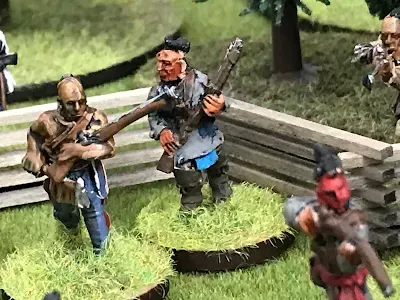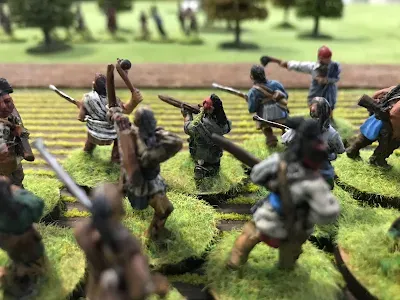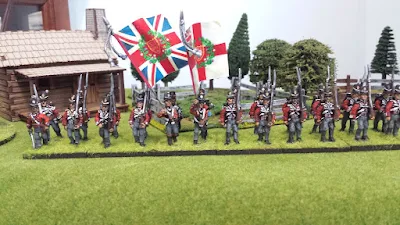Does every Napoleonic wargamer have painted a battalion or more of the French Imperial Guard? Probably. And how many games do they really get used or see the table top. Again probably not many. But you just have to have them. So here is a new use for those figures that may be gathering dust. And once again we turn to that neglected but excellent for wargameing period the War of 1812 in North America and the Battle of New Orleans!
The Battalion d'Orleans or Plauche's Battalion was one of the most colorful units in the American army of the War of 1812. The Battalion participated in the defeat of the British forces at the Battle of New Orleans. The Battalion was a continuation of units which had existed under the French and Spanish regimes and were reorganized by the territorial act of January, 1805. Napoleon had raised and equipped three companies of French Creoles in New Orleans in 1803 after losing Santo Domingo. It is probable that these companies became the core of the Battalion d'Orleans. New Orleans remained very pro-Bonapartist durin this period. They felt a special connection to him because the Empress Josephine was a French Creole. Also, many high ranking Napoleonic exiles fled to New Orleans after the Bourbon regime was restored in France.
After "the Battle" as New Orleanians called it, the Battalion changed it's name to the Louisiana Legion and remained in service until after the Civil War. Throughout its history, the Battalion was known for its resplendent, colorful uniforms of French design. The Battalion was modeled on the Imperial French army of the Emperor Napoleon I. They used the same drill manual and closely approximated the French uniform. Indeed, many members of the Battalion were veteran soldats and officers who had served with Napoleon before moving to New Orleans.
The Battalion consisted of two centre companies (Francs and Blues), two flank companies (Carabiners and Chasseurs) and a company of Dragoons. The flank companies had uniforms based on those of the French Imperial Guard. The centre companies were dressed as the line. The Battalion also had its own flag, adjutant, surgeons, fouriers, and band. A description of the unit's flag in the 1820's describes it as having the words 'Honneur, Patrie, Discipline, Valor' embroidered on it.

.jpeg)









.jpeg)









.jpeg)
.jpeg)




